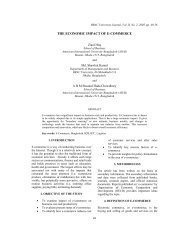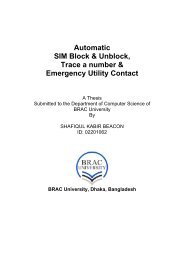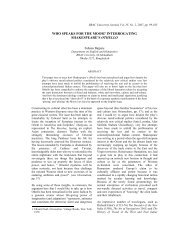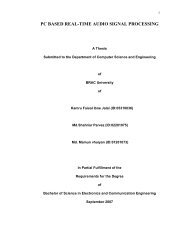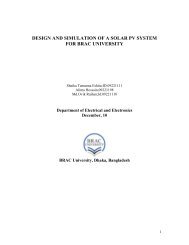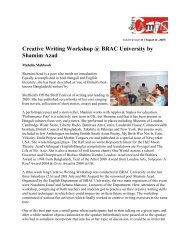LITERATURE SURVEY OF AUTOMATIC FACE RECOGNITION ...
LITERATURE SURVEY OF AUTOMATIC FACE RECOGNITION ...
LITERATURE SURVEY OF AUTOMATIC FACE RECOGNITION ...
Create successful ePaper yourself
Turn your PDF publications into a flip-book with our unique Google optimized e-Paper software.
3.1 Some Major difficulty for AFR<br />
CHAPTER III<br />
COMLEXITY <strong>OF</strong> AFR<br />
In field settings, face images are subject to a wide range of variations.<br />
These include pose or view angle, illumination, occlusion, facial expression, time<br />
delay between image acquisition, and individual differences. The scalability of<br />
face recognition systems to such factors is not well understood. Most research<br />
has been limited to frontal views obtained under standardized illumination on the<br />
same day with absence of occlusion and with neutral facial expression or slight<br />
smile.<br />
For faces to be a useful biometric, facial features used for face recognition<br />
should remain invariant to factors unrelated to person identity that modify face<br />
image appearance. While theory and some data suggest that many of these<br />
factors are difficult to handle, it is not clear where exactly the difficulties lie and<br />
what their causes may be.<br />
The influence of facial expression on recognition is not well understood.<br />
Previous research has been limited primarily to neutral expressions and slight<br />
smiles. Because facial expression affects the apparent geometrical shape and<br />
position of the facial features, the influence on recognition may be greater for<br />
geometry based algorithms than for holistic algorithms.<br />
Occlusion the performance of the face recognition algorithms under<br />
occlusion is in general poor. The face may be occluded by other objects in the<br />
scene or by sunglasses or other things. Occlusion may be unintentional or<br />
intentional. Under some conditions subjects may be motivated to thwart<br />
recognition efforts by covering portions of their face. Since in many situations, the<br />
goal is to recognize non or even uncooperating subjects,<br />
Time delay Faces change over time. There are changes in hair style,<br />
makeup, muscle tension and appearance of the skin, presence or absence of<br />
19






